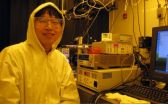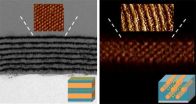(Press-News.org) This press release is available in German.
Leipzig/Dresden/Freiburg. In recent years the economic value of pollination-dependent crops has substantially increased around the world. As a team of researchers from the Helmholtz Centre for Environmental Research (UFZ), the Technical University of Dresden and the University of Freiburg headed by the UFZ wrote in an article entitled "Spatial and temporal trends of global pollination benefit" in the open-access journal PLoS ONE the value of ecological pollination services was around 200 billion US dollars in 1993 and rose to around 350 billion US dollars in 2009. For the first time, the researchers were also able to show in which regions of the world pollination plays a particularly important role and agriculture is furthermore particularly dependent upon the pollination carried out by animals.
The researchers analysed this relationship on the basis of 60 crops, such as coffee, cocoa, apples and soya beans, which are dependent upon pollination by animals, mostly insects such as honeybees and wild bees, butterflies or bumble bees. These investigations enabled them to create a global map showing the dependence of agricultural yields upon pollination. "We can now estimate with a high degree of spatial resolution how large this contribution is in many regions", says the main author, Dr. Sven Lautenbach, researcher in the UFZ Department of Landscape Ecology. Particularly countries such as China, India, the USA, Brazil and Japan greatly benefit from pollination-dependent products. For the first time, the researchers have analysed this effect at the regional level: In the USA, for example, the dependence is particularly high in California and in the corn belt in the Midwest relatively unimportant. In Asia the northeast region of China is particularly dependent upon pollination, in Europe primarily the Mediterranean countries, such as Italy or Greece, and in Africa especially the region along the Nile in Egypt. For Germany the researchers found moderate dependencies – nevertheless, in Germany as well pollination is in no way immaterial.
Globally, the value of pollination-dependent agricultural products, and therefore the value of this ecosystem service, has risen continuously. This is attributable to a significant increase in production quantities for pollination-dependent crops. Since 2001 the costs of production for pollination-dependent crops have also risen significantly, indeed far faster than the prices of non-pollination-dependent field crops such as rice, grains or maize. For the researchers this is an indication that the intensification of agriculture is reflected in a global price increase for pollination-dependent cultures. When fields are sprayed with more pesticides, more fertilisers are applied and valuable agricultural structural elements, such as hedges and rows of trees, are transformed into fields, the insects vanish. Consequently, the extent of pollination is reduced, and this is reflected in higher production prices. "We see this price increase as an initial warning signal that conflicts could arise between the services of insect-related pollination and other agricultural interests", says Sven Lautenbach. For example, if such valuable habitats for insects as hedges, rows of trees or field margin structures continue to disappear and be transformed into agricultural areas or residential areas in the countries in which production takes place, in future the prices for coffee and cocoa will likely rise in future.
According to the calculations of the researchers, a potential decline of pollination could particularly affect those countries in which pollination-dependent crops or cultures represent a substantial part of the gross domestic product from agriculture. This includes, for example, Argentina, Belgium, China, Ghana, Honduras, the Ivory Coast, and Jordan. The researchers have also been able to show, that in countries such as Azerbaijan, Armenia, Cameroon or the Ukraine the relative dependence on these agricultural products has increased significantly between 1993 and 2009. In countries such as Egypt, India, Jordan or Turkey, on the other hand, the relative dependence declined during the same period.
The results of the spatial analysis provide important information for nature conservation practice and political decisions. This enables the development of recommendations at the regional level for the protection of agricultural elements vital for the survival of insects. Furthermore, the information could be used to set up market instruments such as payment for ecosystem services (PES). This instruments could for example, require users benefitting from pollination services to pay for these services. "This could encourage incentives for the protection of insects and their pollination services", says Sven Lautenbach.
Benjamin Haerdle
INFORMATION:
Publication:
Sven Lautenbach, Ralf Seppelt, Juliane Liebscher, Carsten F. Dormann (2012): Spatial and temporal trends of global pollination benefit. PLoS ONE
http://dx.plos.org/10.1371/journal.pone.0035954
The investigations were supported by the German Ministry of Research and Technology (BMBF), the Helmholtz-University-Group „Biotic Ecosystem Services‟ and the Helmholtz program „Terrestrial Environmental Research.
Additional scientific information:
Dr. Sven Lautenbach
Helmholtz Centre for Environmental Research (UFZ), Department
Computational Landscape Ecology
phone: +49-341-235-1942
http://www.ufz.de/index.php?en=5526
Prof. Ralph Seppelt
Helmholtz Centre for Environmental Research (UFZ), Department
Computational phone: +49-341-235-1250
http://www.ufz.de/index.php?en=13905
Prof. Dr. Carsten Dormann
University of Freiburg, Department of Forest Biometry
phone: +49-761-203-3749
http://www.biom.uni-freiburg.de/mitarbeiter/dormann
or via
Tilo Arnhold (UFZ Press Office)
Phone: +49-341-235-1635
http://www.ufz.de/index.php?en=640
Links:
Scientific coordination, moderation and synthesis (GLUES) of Module A of BMBF research programme 'Sustainable Land Management':
http://modul-a.nachhaltiges-landmanagement.de/en/module-a/
Helmholtz-University Research Group "Biological Ecosystem Services" (BESS):
http://www.ufz.de/index.php?en=10882
At the Helmholtz Centre for Environmental Research (UFZ) scientists are researching the causes and consequences of far-reaching changes to the environment. They are concerned with water resources, biological diversity, the consequences of climate change and adaptability, environmental and biotechnologies, bioenergy, the behaviour of chemicals in the environment, their effect on health, modelling and social science issues. Their guiding theme: Our research contributes to the sustainable use of natural resources and helps to secure this basis for life over the long term under the effects of global change. The UFZ employs 1,000 people in Leipzig, Halle and Magdeburg. It is financed by the federal government and the federal states of Saxony and Saxony-Anhalt.
http://www.ufz.de/
The Helmholtz Association contributes towards solving major and pressing social, scientific and economic issues with scientific excellence in six research areas: Energy, Earth and Environment, Health, Key Technologies, Structure of Matter, Aeronautics, Aerospace and Transport. The Helmholtz Association is Germany's largest scientific organisation with over 33,000 employees in 18 research centres and an annual budget of approximately 3.4 billion euros. Its work stands in the tradition of the naturalist Hermann von Helmholtz (1821-1894).
http://www.helmholtz.de
Global prices of pollination-dependent products such as coffee could rise in the long term
2012-04-30
ELSE PRESS RELEASES FROM THIS DATE:
New drug to tackle fat problems
2012-04-30
Medical researchers at the University of Sheffield have defined the structure of a key part of the human obesity receptor- an essential factor in the regulation of body fat- which could help provide new treatments for the complications of obesity and anorexia.
This major advance in research, published in the journal Structure, will greatly enhance the ability to generate drugs which can both block and stimulate the receptor for the obesity hormone leptin. This could have life-changing effects on people suffering from the complications of obesity and malnutrition.
Researchers ...
Blood samples show deadly frog fungus at work in the wild
2012-04-30
The fungal infection that killed a record number of amphibians worldwide leads to deadly dehydration in frogs in the wild, according to results of a new study.
High levels of an aquatic, chytrid fungus called Batrachochytrium dendrobatidis (Bd) disrupt fluid and electrolyte balance in wild frogs, the scientists say, severely depleting the frogs' sodium and potassium levels and causing cardiac arrest and death.
Their findings confirm what researchers have seen in carefully controlled lab experiments with the fungus, but San Francisco State University biologist Vance ...
Can nature's beauty lift citizens from poverty?
2012-04-30
Using nature's beauty as a tourist draw can boost conservation in China's valued panda preserves, but it isn't an automatic ticket out of poverty for the humans who live there, a unique long-term study shows.
Often those who benefit most from nature-based tourism are people who already have resources. The truly impoverished have a harder time breaking into the tourism business, according to the paper, "Drivers and Socioeconomic Impacts of Tourism Participation in Protected Areas," published in the April 25 edition of PLoS One.
The study looks at nearly a decade of burgeoning ...
Folding light: Wrinkles and twists boost power from solar panels
2012-04-30
Taking their cue from the humble leaf, researchers have used microscopic folds on the surface of photovoltaic material to significantly increase the power output of flexible, low-cost solar cells.
The team, led by scientists from Princeton University, reported online April 22 in the journal Nature Photonics that the folds resulted in a 47 percent increase in electricity generation. Yueh-Lin (Lynn) Loo, the principal investigator, said the finely calibrated folds on the surface of the panels channel light waves and increase the photovoltaic material's exposure to light.
"On ...
NYUCN's Dr. Laura Wagner: Study finds accreditation improves safety culture at nursing homes
2012-04-30
Accredited nursing homes report a stronger resident safety culture than nonaccredited facilities, according to a new study published in the May 2012 issue of The Joint Commission Journal on Quality and Patient Safety.
The study shows that senior managers at more than 4,000 facilities across the U.S. identify Joint Commission accreditation as a positive influence on patient safety issues such as staffing, teamwork, training, nonpunitive responses to mistakes, and communication openness. The findings that accreditation stimulates positive changes in safety-related organizational ...
Slow-growing babies more likely in normal-weight women; Less common in obese pregnancies
2012-04-30
Obesity during pregnancy puts women at higher risk of a multitude of challenges. But, according to a new study presented earlier this month at the American Institute of Ultrasound in Medicine annual convention, fetal growth restriction, or the poor growth of a baby while in the mother's womb, is not one of them. In fact, study authors from the University of Rochester Medical Center found that the incidence of fetal growth restriction was lower in obese women when compared to non-obese women.
Researchers, led by senior study author and high-risk pregnancy expert Loralei ...
Assembly errors quickly identified
2012-04-30
Today's cars are increasingly custom-built. One customer might want electric windows, heated door mirrors and steering-wheel-mounted stereo controls, while another is satisfied with the minimum basic equipment. The situation with aircraft is no different: each airline is looking for different interior finishes – and lighting, ventilation, seating and monitors are different from one company to the next. Yet the customer's freedom is the manufacturer's challenge: because individual parts and mountings have to be installed in different locations along the fuselage, automated ...
Golden potential for gold thin films
2012-04-30
Scientists with the Lawrence Berkeley National Laboratory (Berkeley Lab) and the University of California (UC) Berkeley have directed the first self-assembly of nanoparticles into device-ready materials. Through a relatively easy and inexpensive technique based on blending nanoparticles with block co-polymer supramolecules, the researchers produced multiple-layers of thin films from highly ordered one-, two- and three-dimensional arrays of gold nanoparticles. Thin films such as these have potential applications for a wide range of fields, including computer memory storage, ...
New graphene-based material could revolutionize electronics industry
2012-04-30
The most transparent, lightweight and flexible material ever for conducting electricity has been invented by a team from the University of Exeter. Called GraphExeter, the material could revolutionise the creation of wearable electronic devices, such as clothing containing computers, phones and MP3 players.
GraphExeter could also be used for the creation of 'smart' mirrors or windows, with computerised interactive features. Since this material is also transparent over a wide light spectrum, it could enhance by more than 30% the efficiency of solar panels.
Adapted from ...
lobSTR algorithm rolls DNA fingerprinting into 21st century
2012-04-30
CAMBRIDGE, Mass. (April 27, 2012) – As any crime show buff can tell you, DNA evidence identifies a victim's remains, fingers the guilty, and sets the innocent free. But in reality, the processing of forensic DNA evidence takes much longer than a 60-minute primetime slot.
To create a victim or perpetrator's DNA profile, the U.S. Federal Bureau of Investigation (FBI) scans a DNA sample for at least 13 short tandem repeats (STRs). STRs are collections of repeated two to six nucleotide-long sequences, such as CTGCTGCTG, which are scattered around the genome. Because the ...





